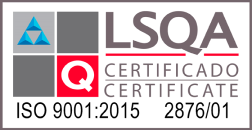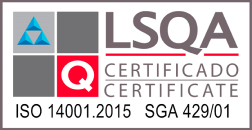The air quality is a global concern due to its negative effects on human health and the environment. PM2.5 and PM10 are two of the most concerning pollutants in the ambient air due to their ability to penetrate deep into the lungs and cause a range of health problems. To better understand the sources of atmospheric emissions of PM2.5 and PM10, receptor models are used. In this essay, we will describe four of the most common receptor models: PMF, CMB, Unmix, and Factor Analysis.
The PMF (Positive Matrix Factorization) model is a mathematical technique that uses air quality measurements to estimate sources of atmospheric emissions. This model is based on decomposing a data matrix into positive matrix factorization matrices (PMF). The model uses these matrices to estimate the contribution of specific emission sources.
The PMF model is commonly used for air quality studies in urban areas. For example, it has been used to identify PM2.5 emission sources in cities like Beijing, China, and Mexico City. The model has been effective in determining the contribution of specific emission sources such as fossil fuel combustion, transportation, and natural sources of emissions.
The PMF modeling process involves identifying the data matrix X, which contains measured chemical species concentrations in the ambient air, and the source profiles matrix F, which describes the chemical composition of emissions from each source. A contributions matrix G is also estimated, which describes the contribution of each source to the ambient air composition. The model is optimized to minimize the difference between the data matrix X and the product of the source profiles and contributions matrices.
The CMB (Chemical Mass Balance) model is another commonly used receptor model to estimate sources of PM2.5 and PM10 emissions. This model is based on the mass balance of pollutants in the ambient air. The model uses measurements of pollutant concentrations in the air to estimate the contribution of specific emission sources.
The CMB model has been used in a wide variety of air quality studies, including determining PM2.5 and PM10 emission sources in both urban and rural areas. For example, it has been used to identify PM2.5 emission sources in cities such as Los Angeles, California, and Bangkok, Thailand. The model has been effective in determining the contribution of specific emission sources such as vehicle combustion and fossil fuel burning in power plants.
The CMB modeling process involves identifying the emission sources of interest and measuring the concentration of pollutants in the ambient air. Then, a mathematical model is used to estimate the contribution of each source to the total pollutant concentration. The model is adjusted to minimize the difference between estimated concentrations and those measured in the ambient air.
The Unmix model is another receptor model used to determine PM2.5 and PM10 emission sources. This model is based on the chemical decomposition of pollutants in the ambient air. The model uses measurements of chemical species concentrations in the air to identify emission sources.
The Unmix model has been used in air quality studies in both urban and rural areas. For example, it has been used to determine PM2.5 emission sources in cities like New York and Chicago in the United States. The model has been effective in identifying specific emission sources such as fossil fuel burning and the emission of volatile organic compounds.
The Unmix modeling process involves identifying the data matrix X, which contains measured chemical species concentrations in the ambient air, and the source profiles matrix F, which describes the chemical composition of emissions from each source. The model uses these matrices to estimate the contribution of specific emission sources.
Factor Analysis (FA) is another receptor model used to identify PM2.5 and PM10 emission sources. This model is based on decomposing the data matrix into latent factors that represent emission sources.
Factor analysis has been used in a wide variety of air quality studies, including the determination of PM2.5 and PM10 emission sources in urban and rural areas. For example, it has been used to identify PM2.5 emission sources in cities such as Sao Paulo, Brazil, and Hong Kong.
The modeling process of factor analysis involves the identification of the data matrix X, which contains the concentrations of chemical species measured in the ambient air, and the source profile matrix F, which describes the chemical composition of each emission source. The model uses these matrices to estimate the contribution of specific emission sources.
In conclusion, receptor models are important tools for identifying PM2.5 and PM10 emission sources in ambient air. The PMF model is based on the decomposition of a data matrix into positive matrix factorization matrices, the CMB model is based on the mass balance of pollutants in ambient air, the Unmix model is based on the chemical decomposition of pollutants in ambient air, and factor analysis is based on the decomposition of the data matrix into latent factors representing emission sources. Each model has its own strengths and weaknesses, and the choice of the appropriate model depends on the nature of the available data and research questions. Ultimately, the use of these models can help researchers and policymakers make informed decisions to improve air quality and protect public health.











